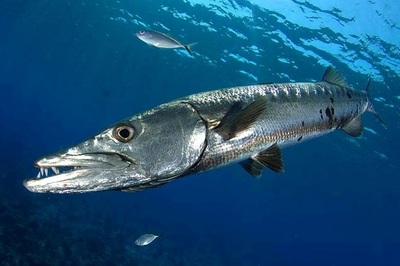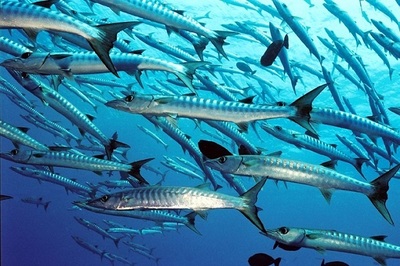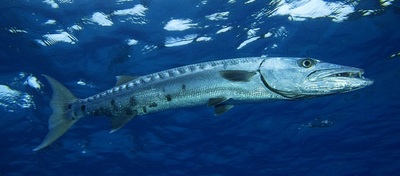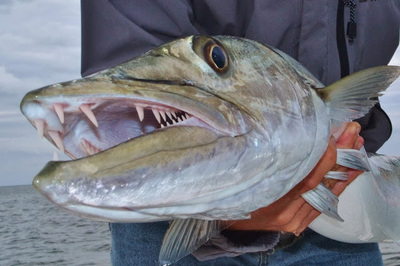BarracudaA vicious predator, the Great Barracuda is one of the scariest looking fish on the reef. You can find it swimming with its mouth open, showing off its long knife-like teeth, which it uses to slice large fish in half so it can eat them!
If it is hunting fish near the bottom of the reef, it can darken its skin colour to blend in and catch prey by surprise. This strategy is one example of cryptic coloration—the ability of many animals to use their skin colour to blend in to their surroundings and remain unseen. The Barracuda's tail, also called the caudal fin, propels the barracuda quickly through the water when the barracuda moves it quickly from side to side, its streamlined body and its tail shape -- large relative to the rest of its body and forked -- give it exceptional speed in the water. The pectoral fins sit on the sides of the Barracuda's body, perpendicular to the body. |
The pectoral fins allow it to quickly manoeuvre, change directions and stop -- which is especially important in the Barracuda's habitat, the reef. The distance between the dorsal fins, which sit on top of the Barracuda's back, keeps the fish streamlined, which also aids its agility and swimming speed.
Although Giant Barracuda have a well-deserved reputation as fierce predators, attacks on humans are not common and generally involve unusual circumstances, such as wading or swimming in turbid water while wearing bright objects or carrying speared fish.
Although Giant Barracuda have a well-deserved reputation as fierce predators, attacks on humans are not common and generally involve unusual circumstances, such as wading or swimming in turbid water while wearing bright objects or carrying speared fish.
Fish data extract from INTERNATIONAL GAME FISH ASSOCIATION





